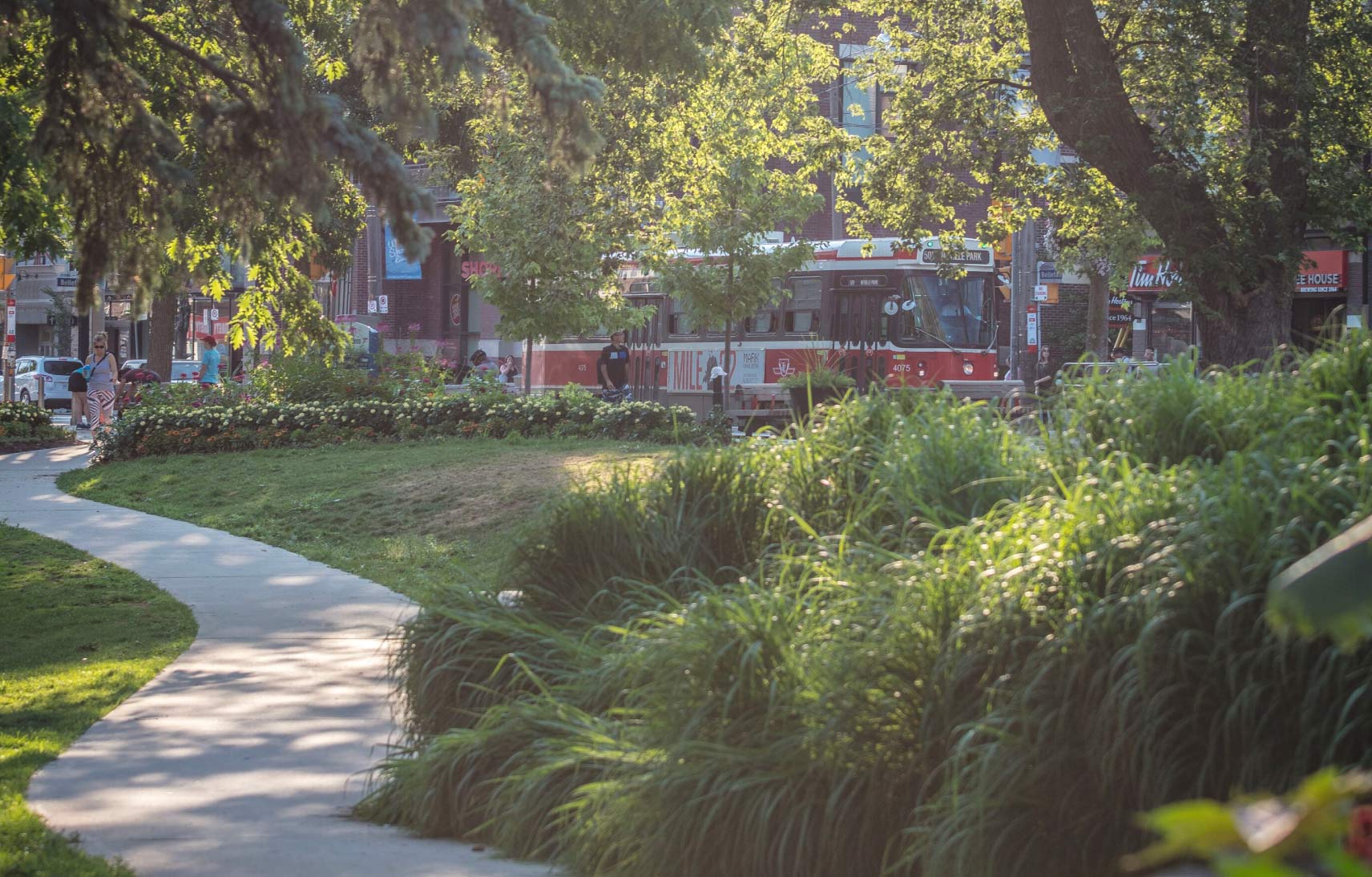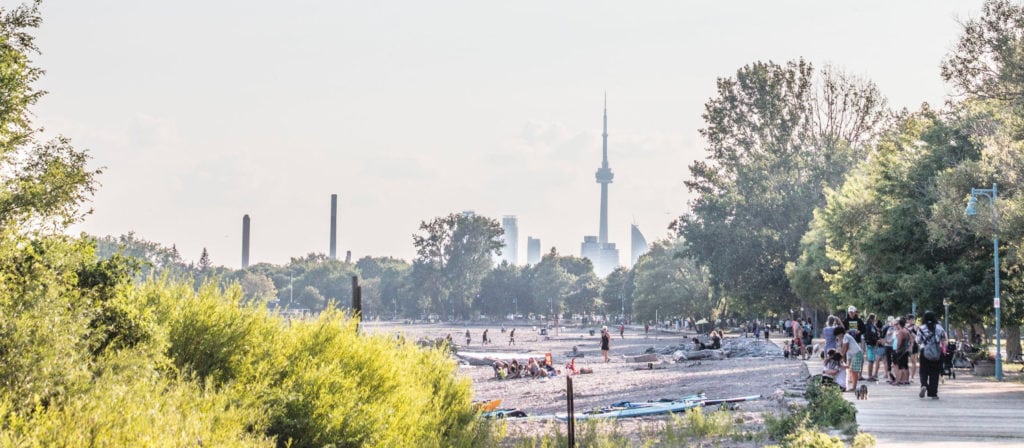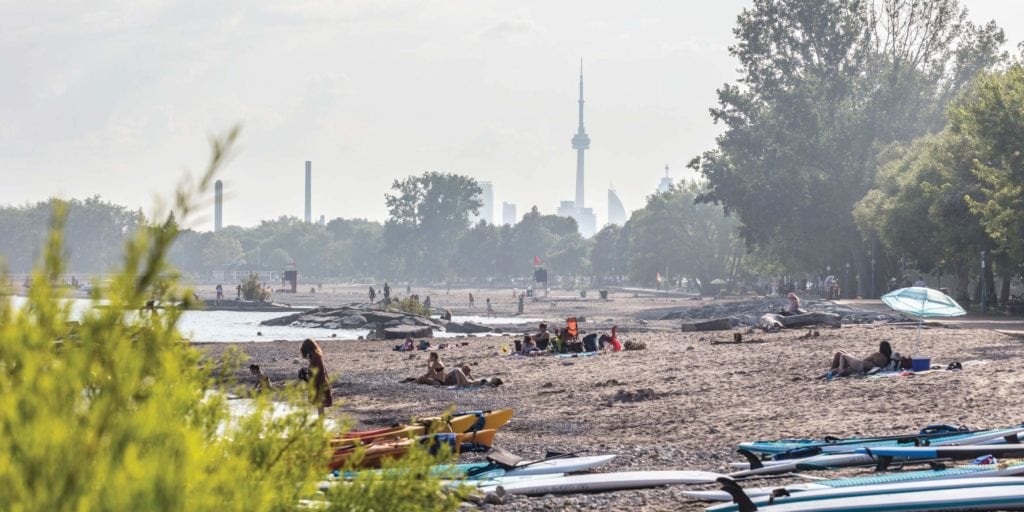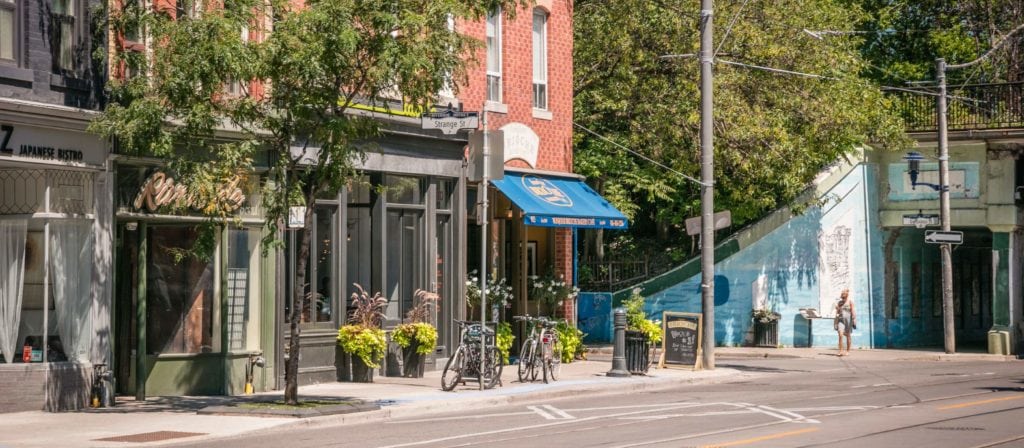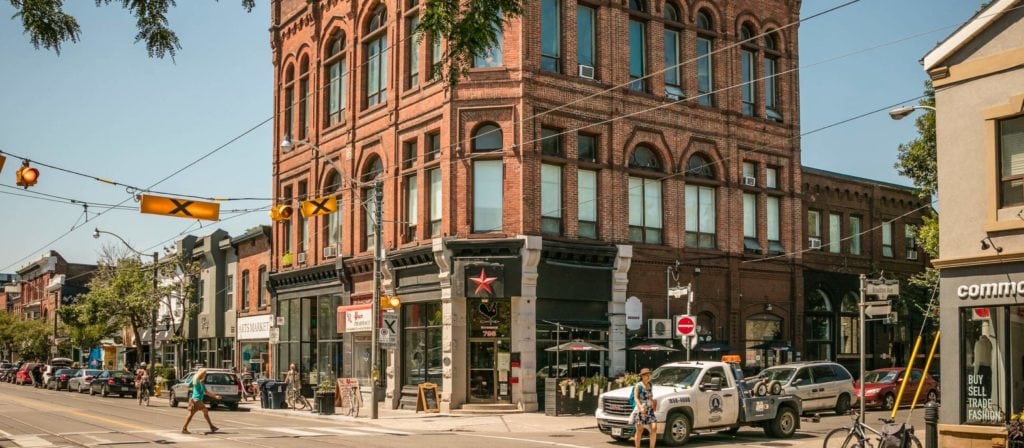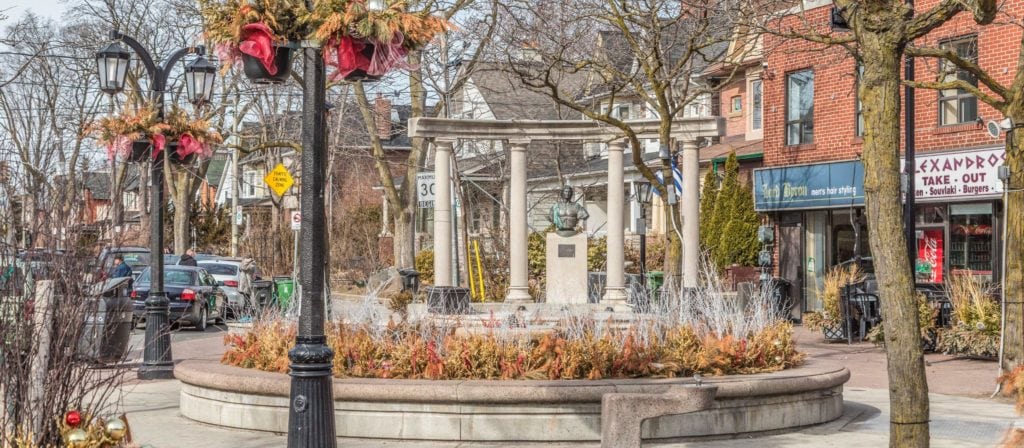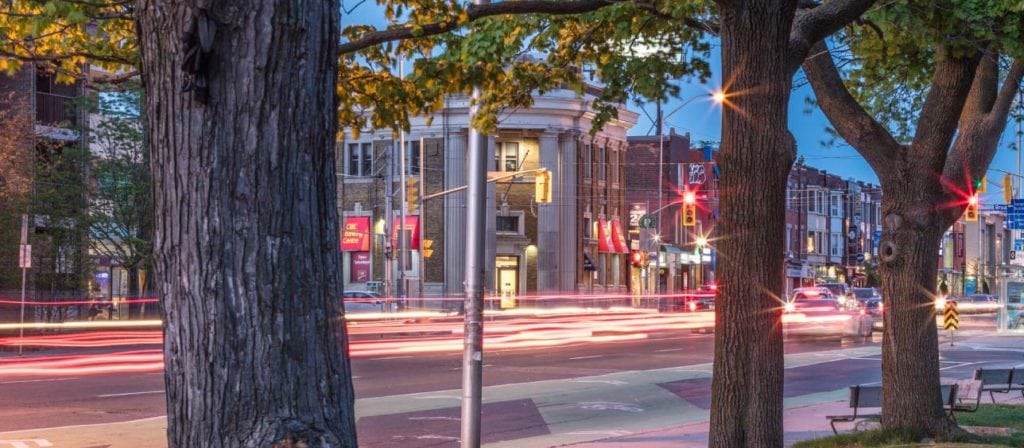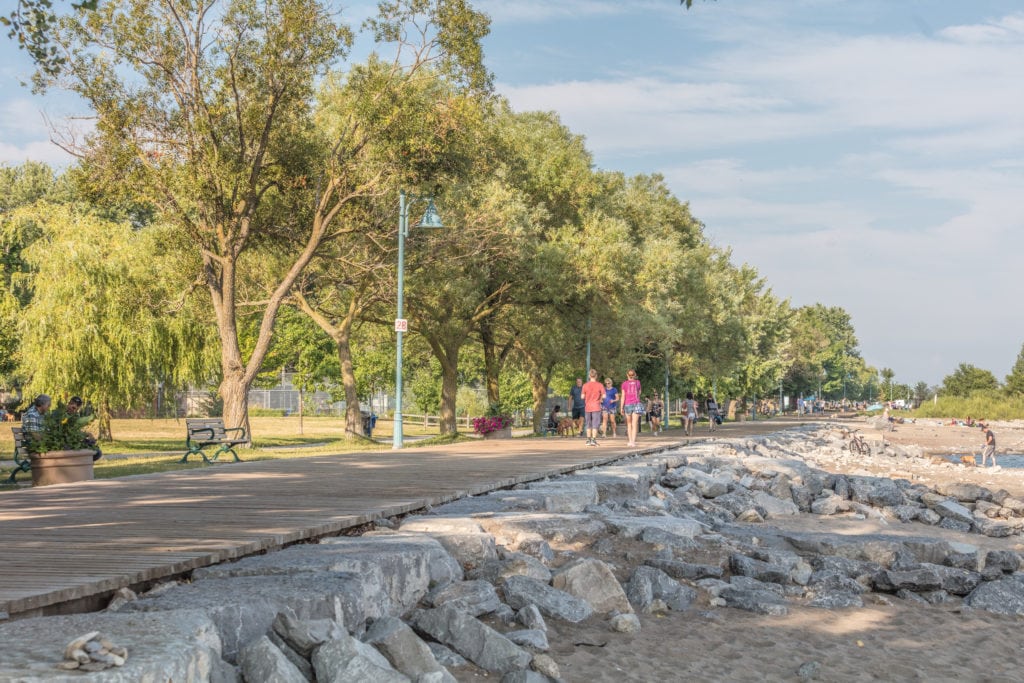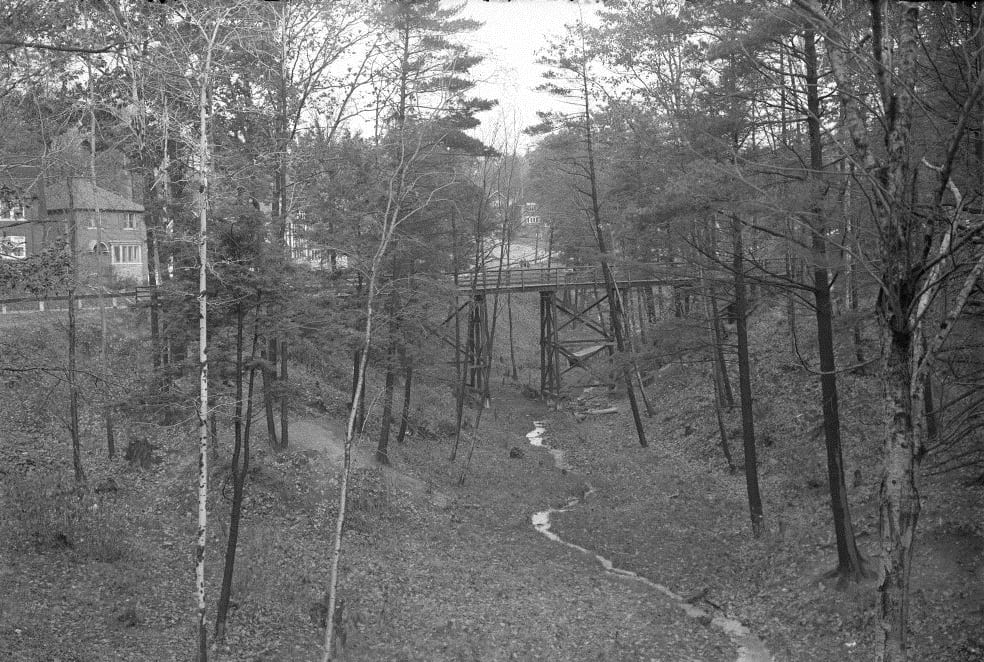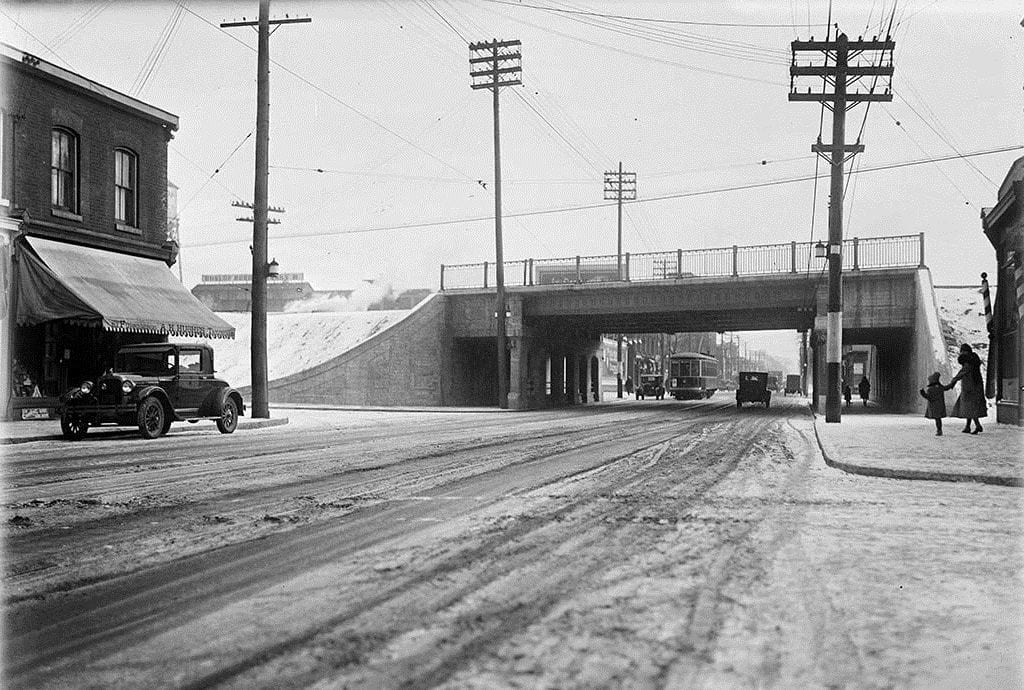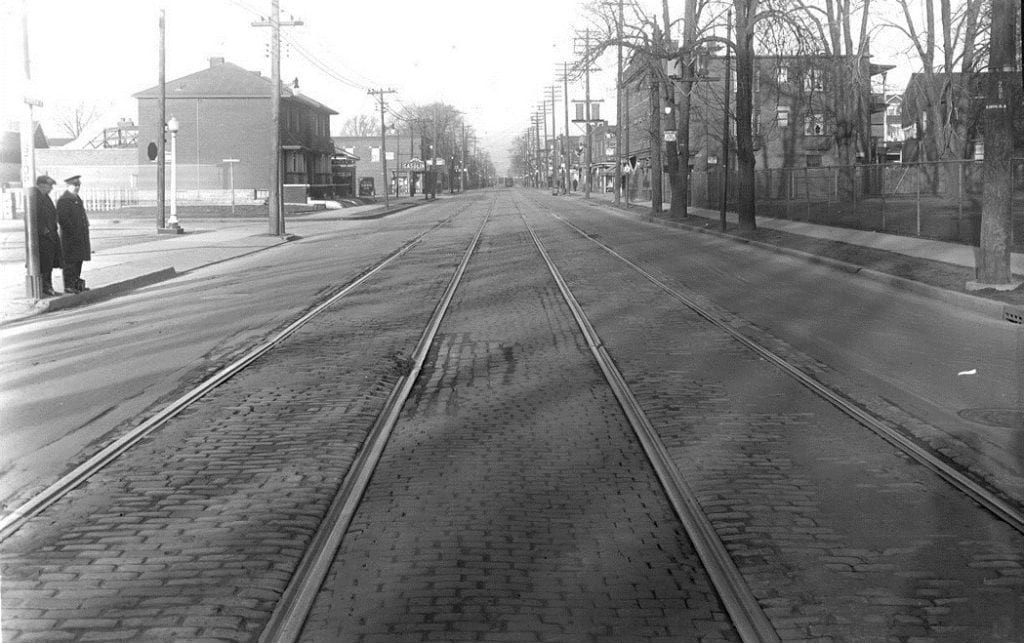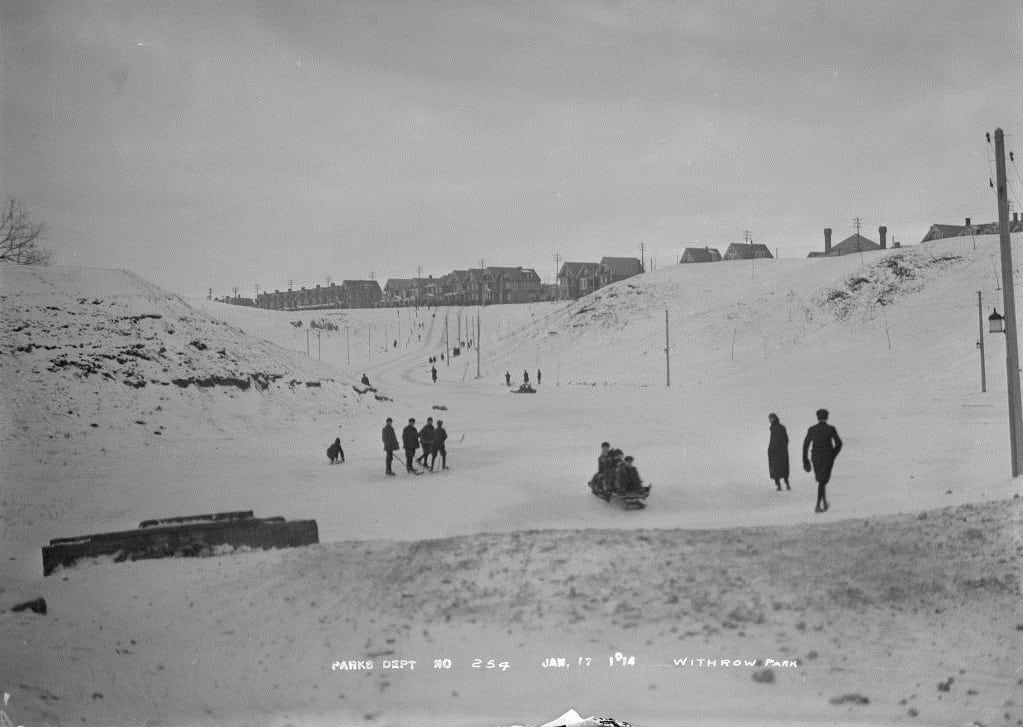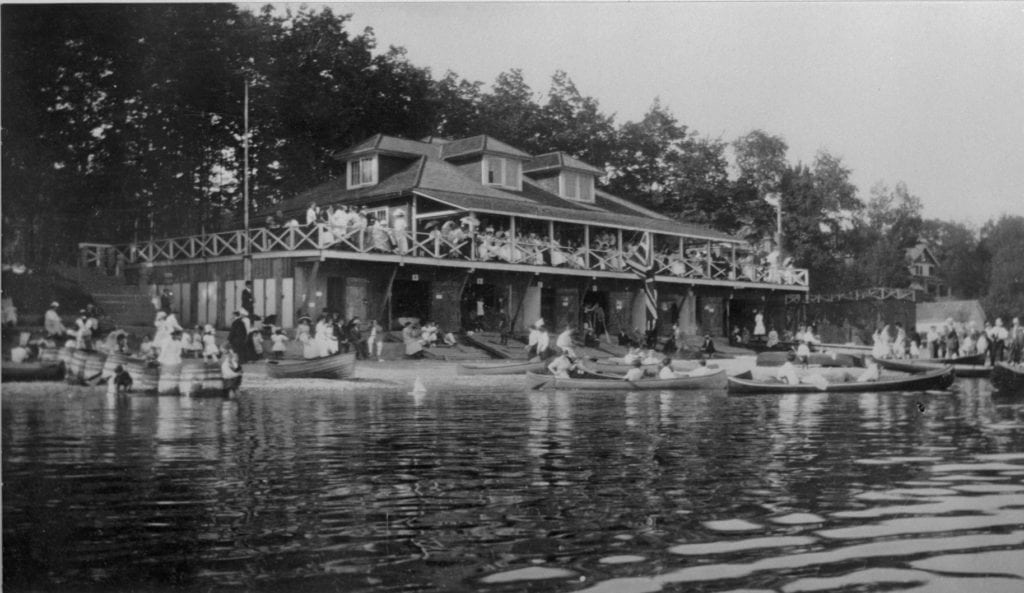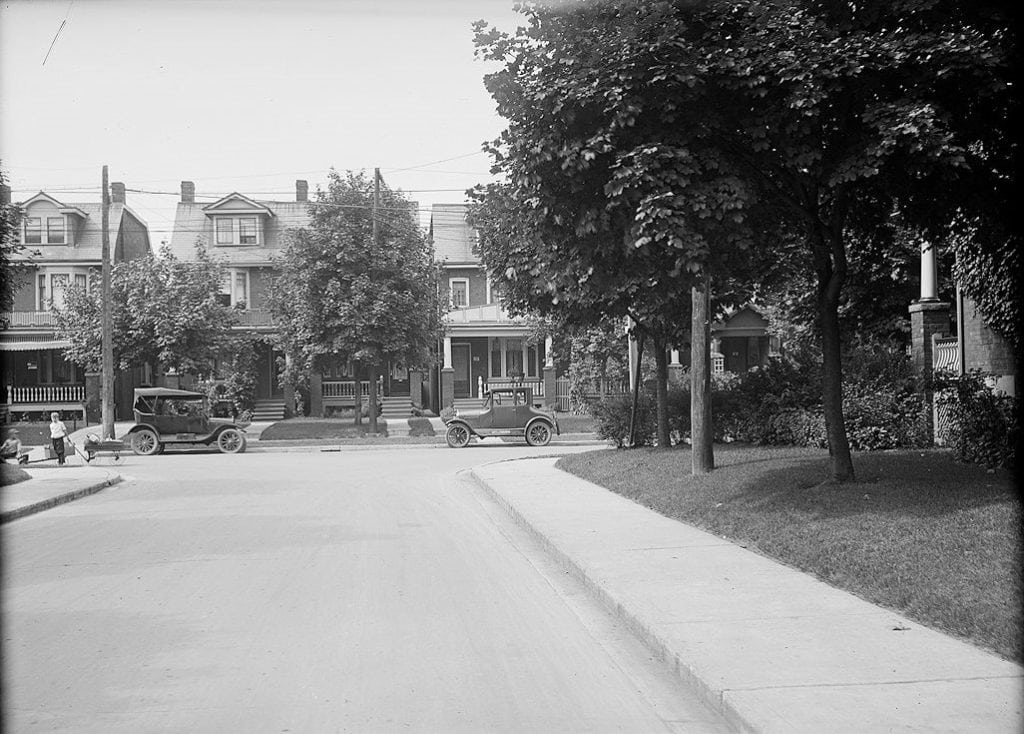Playter Estates
Just to the east of the Don Valley, Playter Estates has always been a residential neighbourhood highly influenced by the presence of the Danforth – and its notably Greek heritage. The area is filled with picturesque Arts and Crafts, Victorian, and Edwardian homes, with tremendous amounts of character, which afford residents peace, quiet, and convenience (with the nearby DVP acting as the perfect artery for commuters). The shops along the Danforth are especially charming and, most of all, convenient.
This area was originally owned by George Henry Playter, who moved to Toronto in 1793 and was granted 200 acres of land. His influence on the area can be felt today, in street names like Ellerbeck (named after his daughter-in-law) and Jackman (for his granddaughter-in-law). You can even find original homes owned by the Playters –such as the Old Playter Farmhouse (28 Playter Crescent).
Riverdale
Another neighbourhood just east of the Don Valley, Riverdale is filled with some of the city’s best public and private schools, shops, and the best ways to access transit in the city (whether by subway, streetcar, or behind the wheel). Young couples love Riverdale real estate, thanks to the narrower Victorian and Edwardian homes which are brimming with character as well as farmhouses. Don’t forget East Riverdale Park – which features some of the best views of the city and the best hills for tobogganing – as well as Withrow Park, another great option to enjoy the outdoors.
The growth of Riverdale can be tied back to the Grand Trunk Railway, which made its presence known in the 1850s. This provided workers settling in the area somewhere to live. Following that, in 1918, the Prince Edward Viaduct was built and provided Riverdale with easy access to downtown.
Leslieville
The artistic heart of the East End. Leslieville is where you will find all the hip cafes, restaurants, and hole-in-the-wall brunch spots that have brought an element of youth to this dynamic area. The homes here are perfect for young families, particularly those who want to still feel a bit of the city (while having some room to grow). Enjoy brunch at Bonjour Brioche, marvel at the new Broadview Hotel, and even walk down to the beach (or over to the Distillery District) for some added fun.
Did you know that the majority of Leslieville’s early residents were either gardeners or brick makers? This area was developed around the Toronto Nurseries, which were owned by George Leslie – and, yes, that’s where the area would end up getting its name from!
View The GalleryThe Beaches
We often forget how lucky we are, as Torontonians, that we live so close to the lake. The Beaches is a nice reminder of that luck, with people tanning, walking dogs, swimming, and kite/windsurfing in the summer (and even sometimes in the winter). The area is known for its Victorian and Edwardian clapboard houses, which add a romantic feel to the Beaches. This wonderful neighbourhood is established with a great sense of community and full of character with distinct wraparound verandas. Don’t foget about the yearly Jazz Festival – which is the absolute highlight of living in this fantastic neighbourhood.
It took quite a while before the Beaches were recognized as a true residential neighbourhoods. The area was farmland until the late 1800s when it was subdivided and set aside for parks. It was then home to several amusement parks which made the area a hip summertime destination. It wasn’t until the 1920s when the neighbourhood gained traction as a place to call home.
View The Gallery